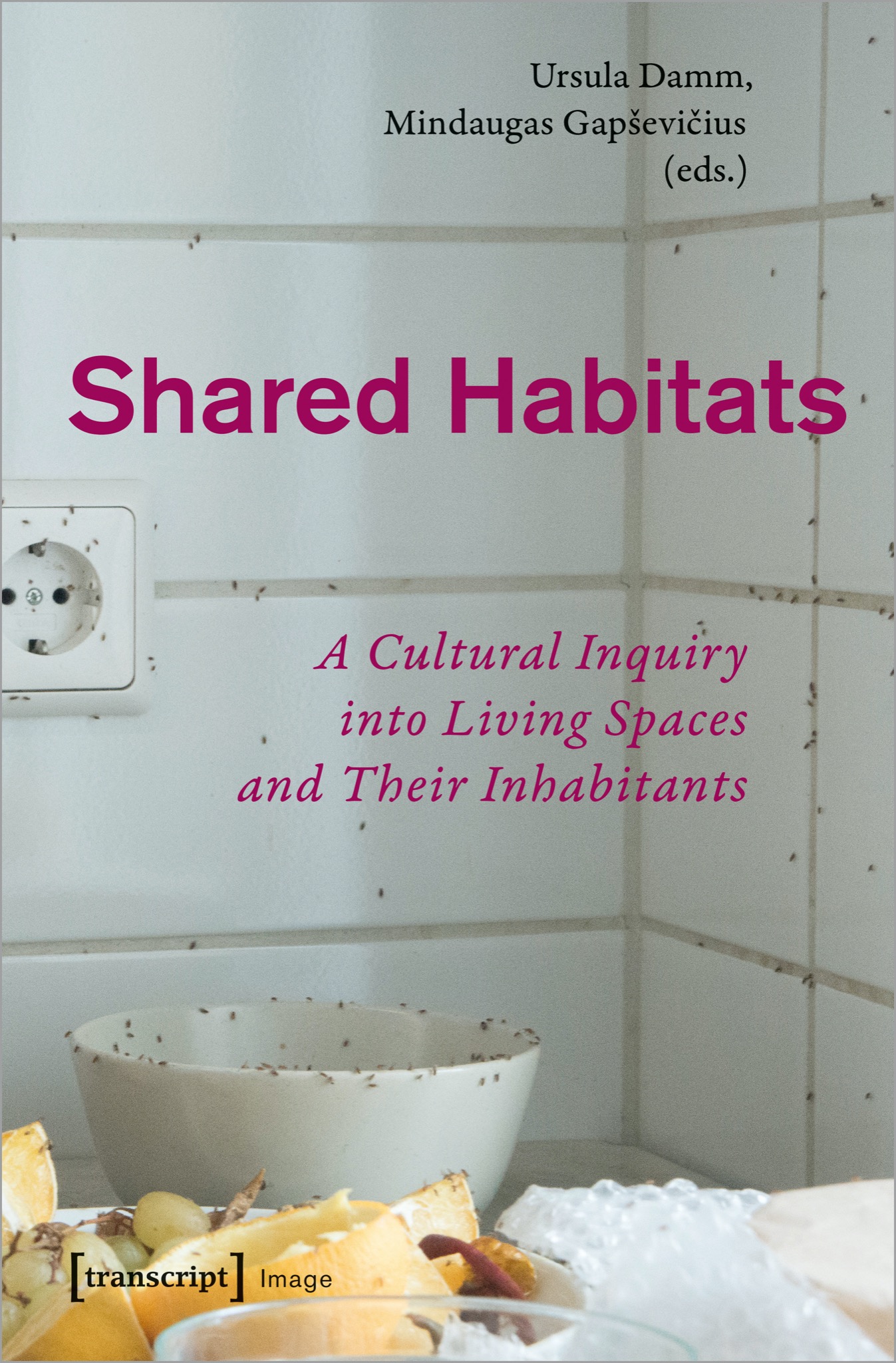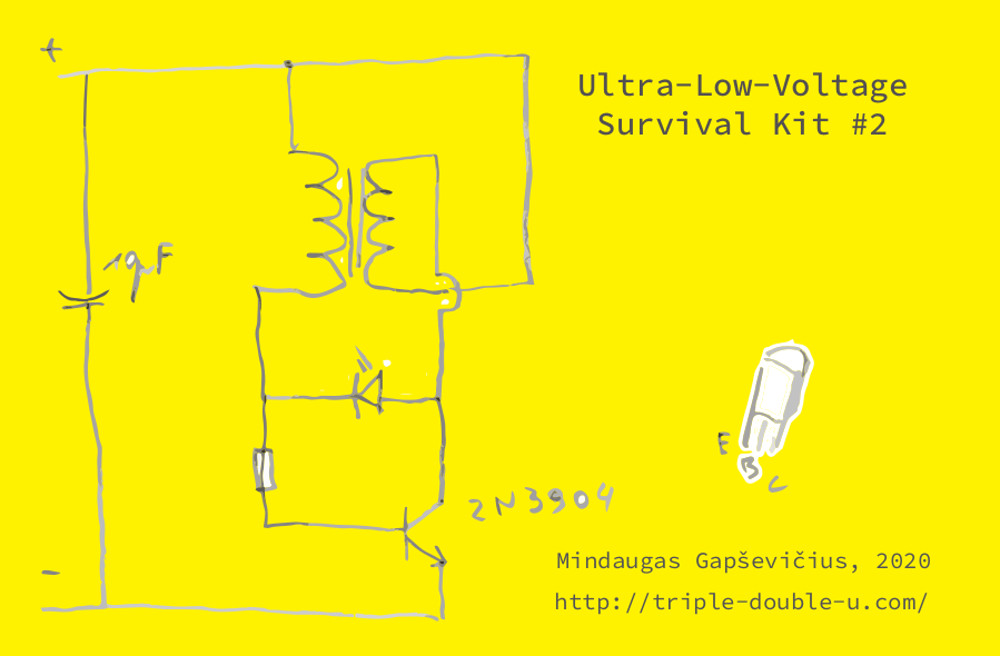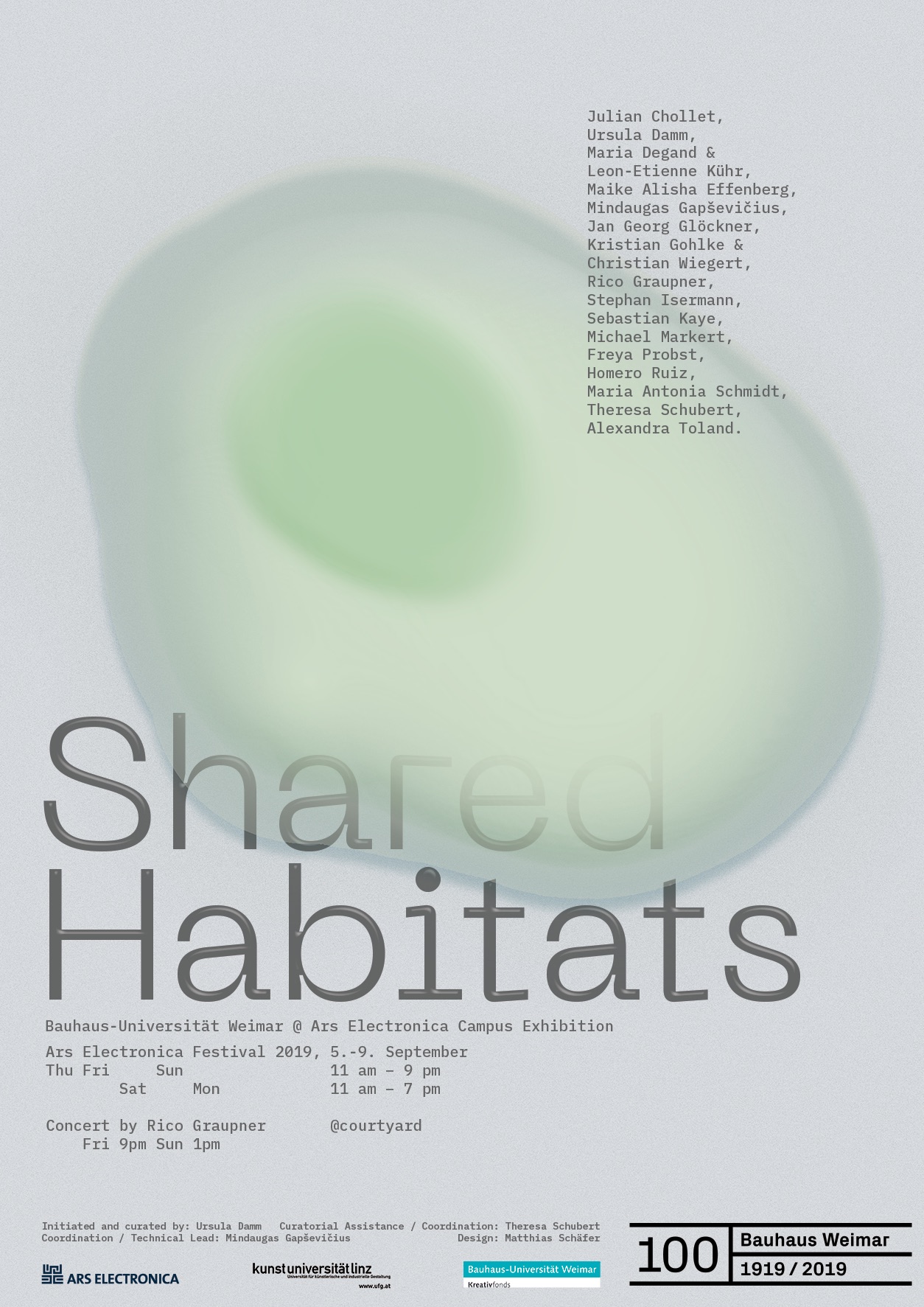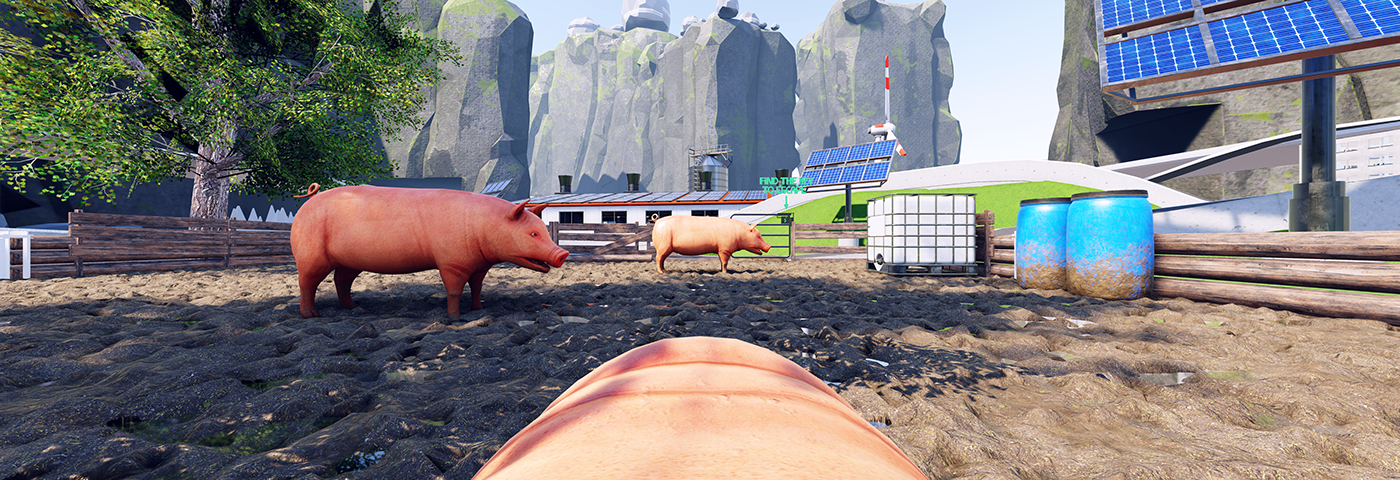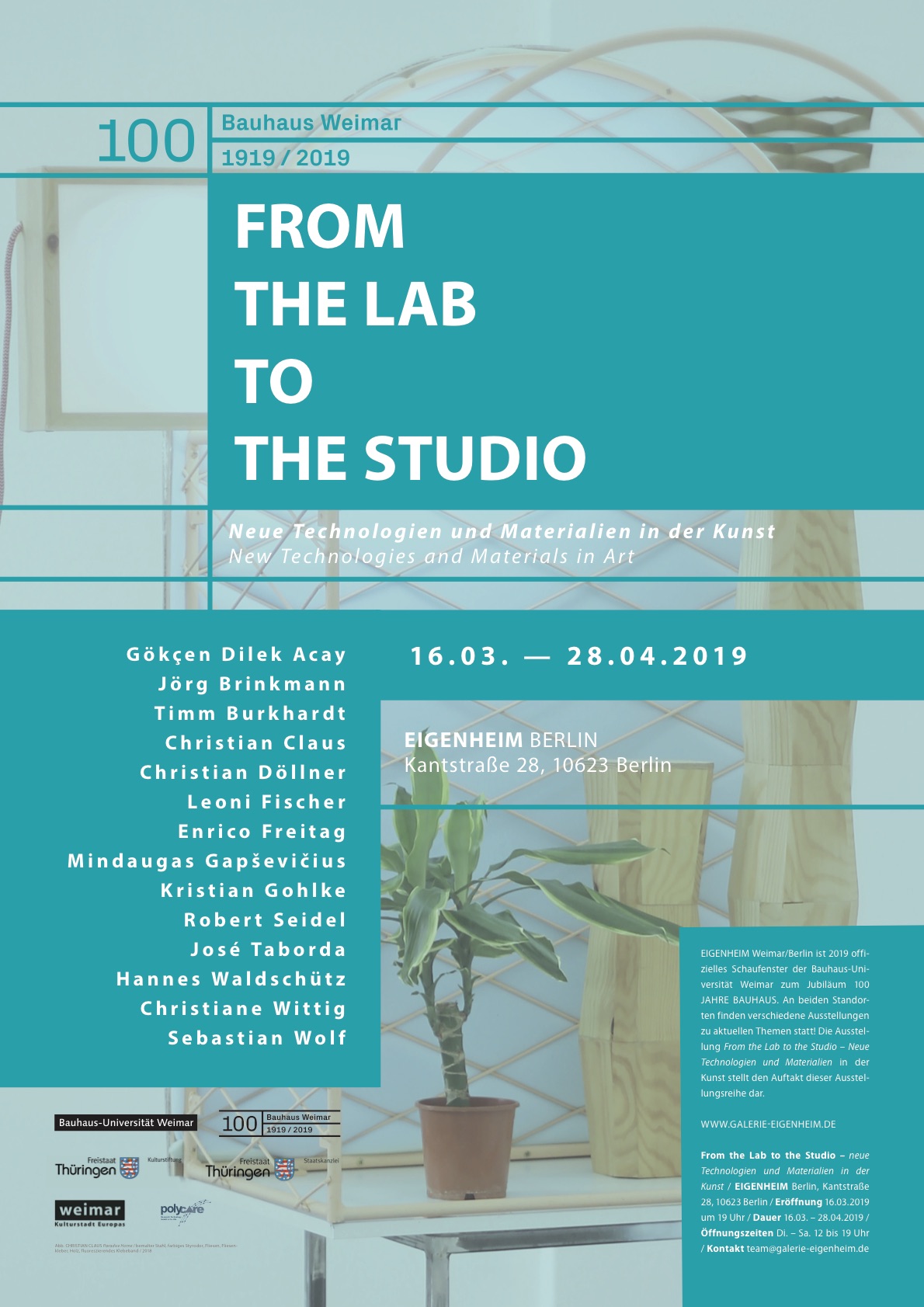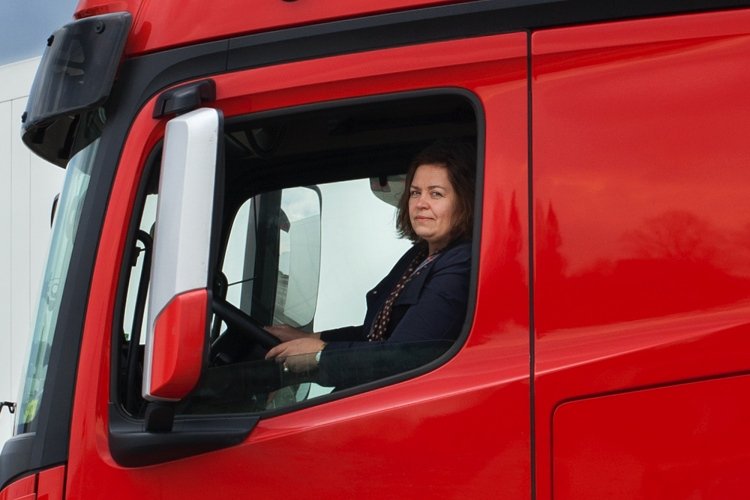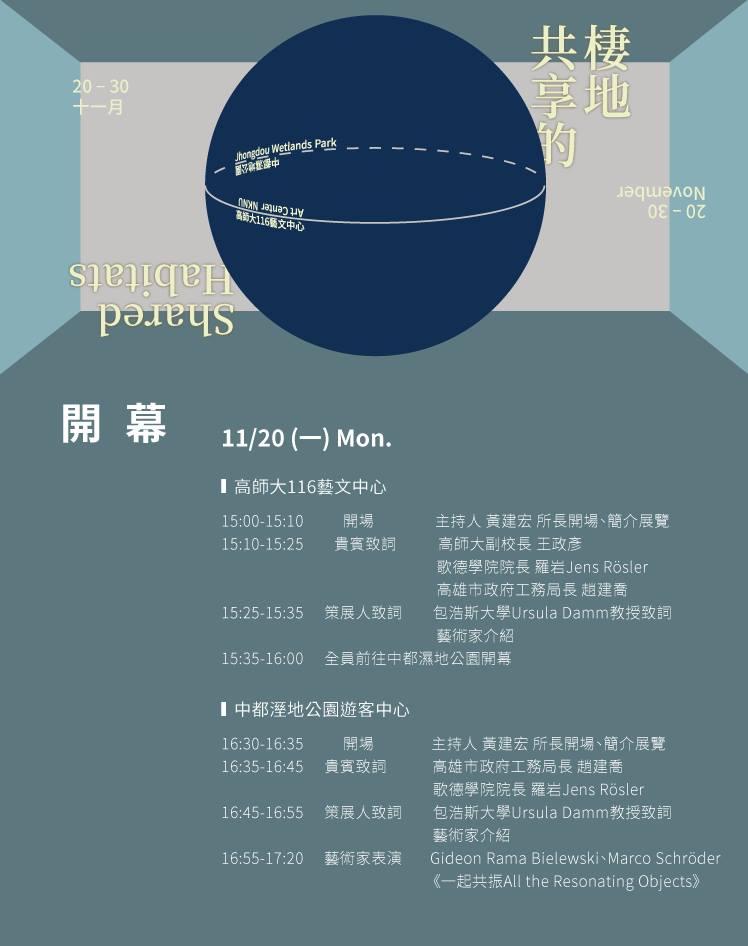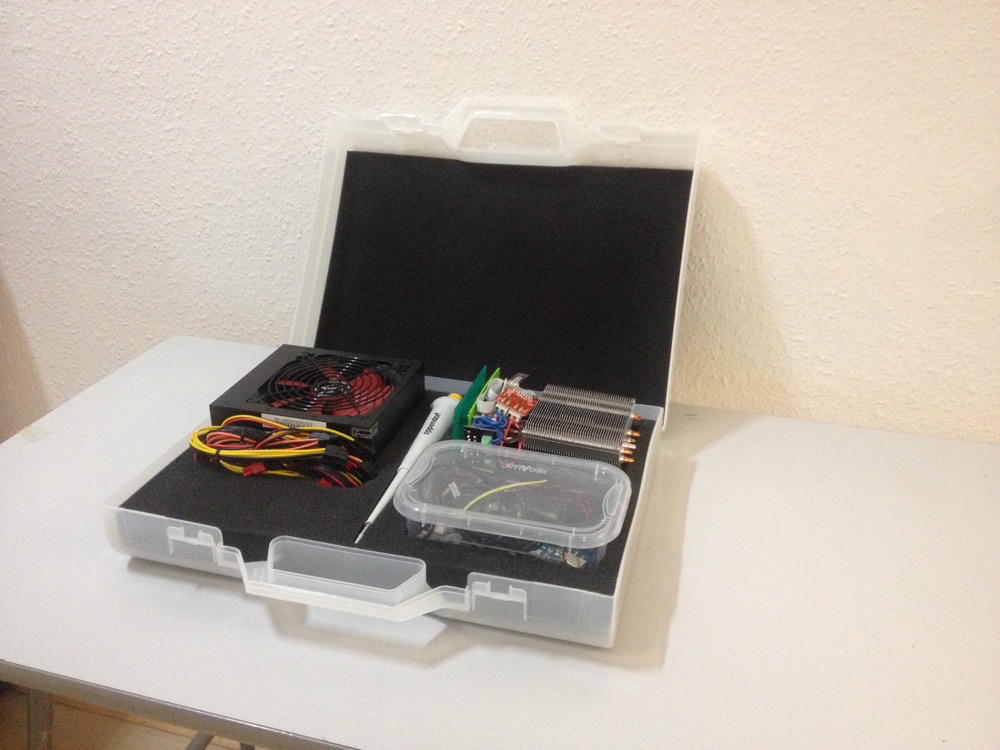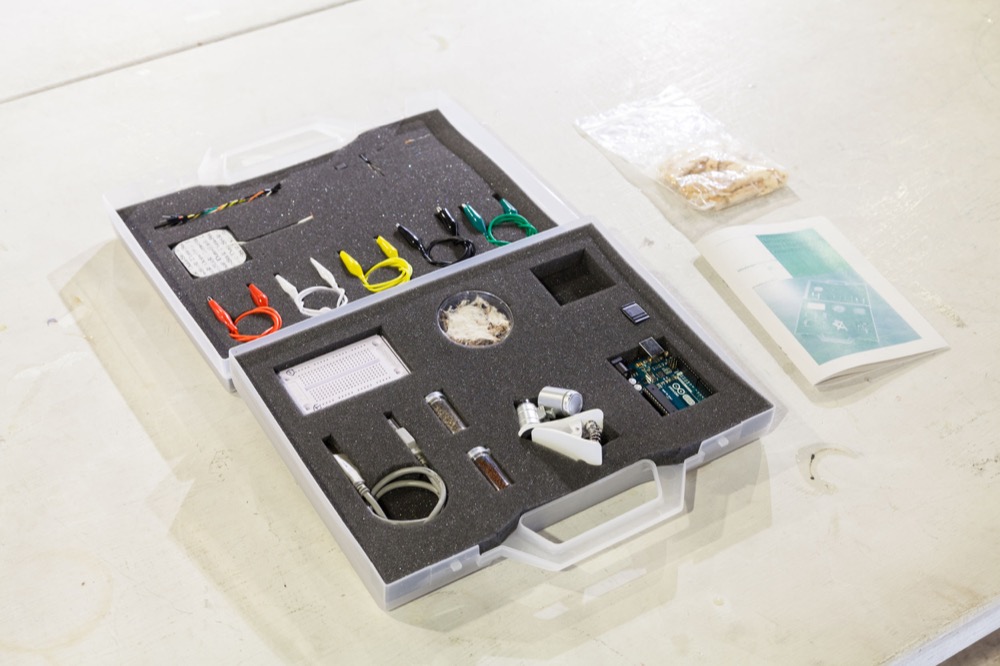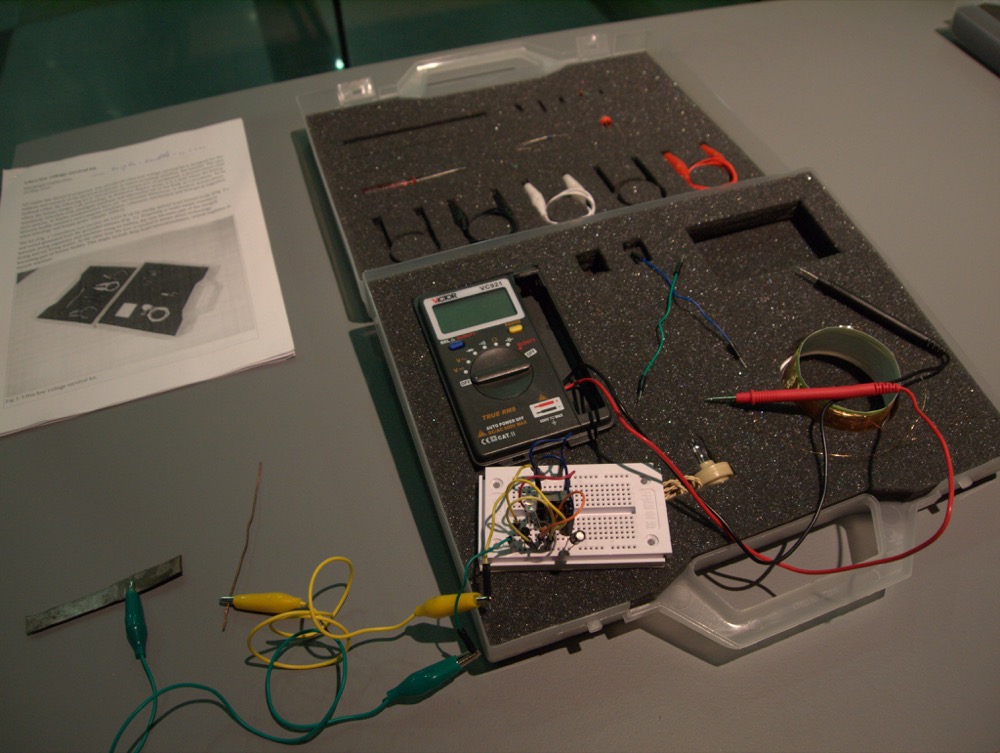Ursula Damm / Mindaugas Gapsevicius (eds.) Shared Habitats A Cultural Inquiry into Living Spaces and Their Inhabitants Recently, three exhibitions under the title Shared Habitats were carried out by a team from the Chair of Media Environments at Bauhaus University, Weimar. Today, I am happy to share the publication, comprising the work of the last …
Category Archives: Introduction to Posthuman Aesthetics
Ultra-Low-Voltage Survival Kit #2
The reduced version of the Ultra-Low-Voltage Survival Kit is on view at the Eigenheim Gallery in Berlin from 22.05.2020 to 11.07.2020. It refers to the nature of the electrical signal as the base for digital computation and invites the user to experience electricity with their bodies. The toolkit includes tools for building up an interface …
Introduction to Posthuman Aesthetics @ Campus Ars Electronica
Installation with toolkits, manuals, and video tutorials September 5-9, 2019Opening reception September 4, 18:30 @ Kunstuniversität Linz The Introduction to Posthuman Aesthetics with its four toolkits, manuals, and video tutorials is featured this year at the Ars Electronica within the “Shared Habitats” exhibition of the Bauhaus University Weimar.
Toolkits and DIWO Experiments @ MO Museum
Installation with toolkits, manuals, video tutorials, and workshops 04.05.2019 – 22.07.2019MO Museum Vilnius Four toolkits and DIWO experiments are featured at MO Museum Vilnius between May 4th and July 22nd. The toolkits are part of the Introduction to Posthuman Aesthetics project, and the DIWO experiments are part of the Self-Repair Lab.
Mycorrhizal networks or how I hack plant conversations @ Eigenheim Berlin
Installation with toolkit, manual, and video tutorial Eigenheim Berlin cordially invites to the opening on 16.03.2019 at 7 p.m. at Kantstraße 28 in Berlin Charlottenburg. The toolkit “Mycorrhizal networks or how I hack plant conversations” was developed between 2016-2019. Two experiments and the video tutorial of the toolkit were developed in collaboration with Martin Howse. …
Continue reading “Mycorrhizal networks or how I hack plant conversations @ Eigenheim Berlin”
Mycorrhizal networks or how I hack plant conversations at Kuldīga
Workshop3- 8 August 2018, International Summer school of contemporary art, Kuldīga (LV) Latvian Centre for Contemporary Art is organising the Summer School in cooperation with Kuldīga artist residency and Latvian Academy of Art. It is aimed at providing the emerging professionals with lectures by acknowledged lecturers and moderators of workshops in a free and interdisciplinary …
Continue reading “Mycorrhizal networks or how I hack plant conversations at Kuldīga”
“Shared Habitats” – Media Art and Design students exhibit in Taiwan
20 – 30 November 2017Location: Jhongdou Wetlands Park and 116 Art Center, NKNUCurators: Prof. Ursula Damm and Mali Wu The Graduate Institute of Interdisciplinary Art, National Kaohsiung Normal University, has invited 11 artists and 9 pieces from the Media Art and Design degree course at the Faculty of Art and Design of Bauhaus-Universität Weimar to …
Continue reading ““Shared Habitats” – Media Art and Design students exhibit in Taiwan”
How I prepare myself to be cloned
Toolkit Cloning is a complex issue involving scientific knowledge, civil law, and ethical questions yet to be solved by humanity. On the other hand, the methodology used for cloning animals is not that complex and could be easily imagined with the use of simple tools. Referring to mythological hybrids like centaurs, mermaids, and minotaurs, the …
Mycorrhizal networks or how I hack plant conversations
Toolkit One of the scientific terms defining plant interaction is allelopathy, a phenomenon wherein compounds produced by one plant affect the growth of surrounding plants. The compounds produced are released into the soils or taken in by symbiotic fungi and further transported over mycorrhizal networks to the target plants within the same community in order …
Continue reading “Mycorrhizal networks or how I hack plant conversations”
Ultra low voltage survival kit
Toolkit All matter has electrical properties. Granted, electric signals in carbon-based organic matter and silicon-based computational machines are of same nature, the Ultra-Low-Voltage Survival Kit explores the idea of generating electricity with human body. While practically letting the user of the toolkit move subatomic particles in and out of the body, the project invites one …
